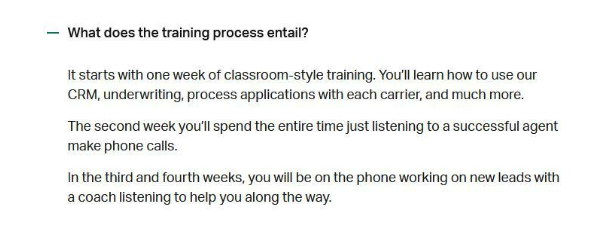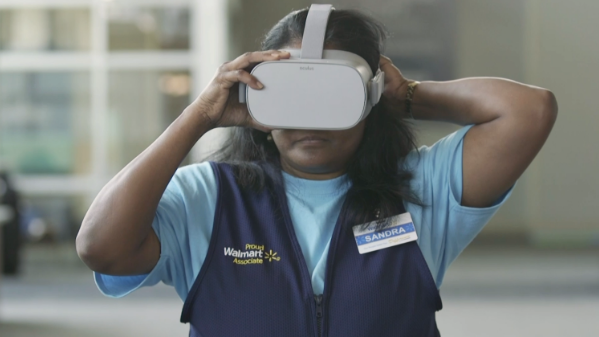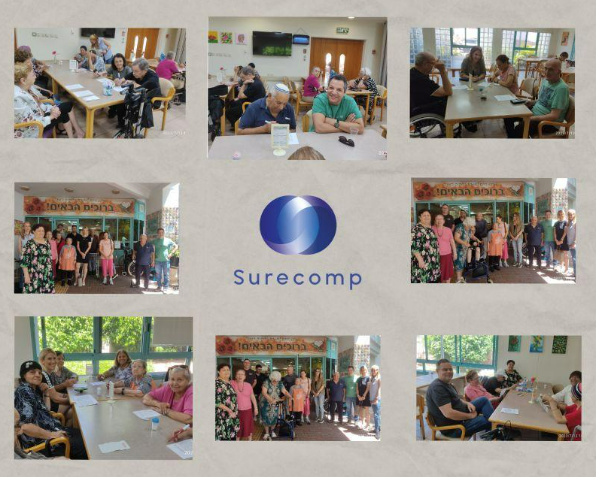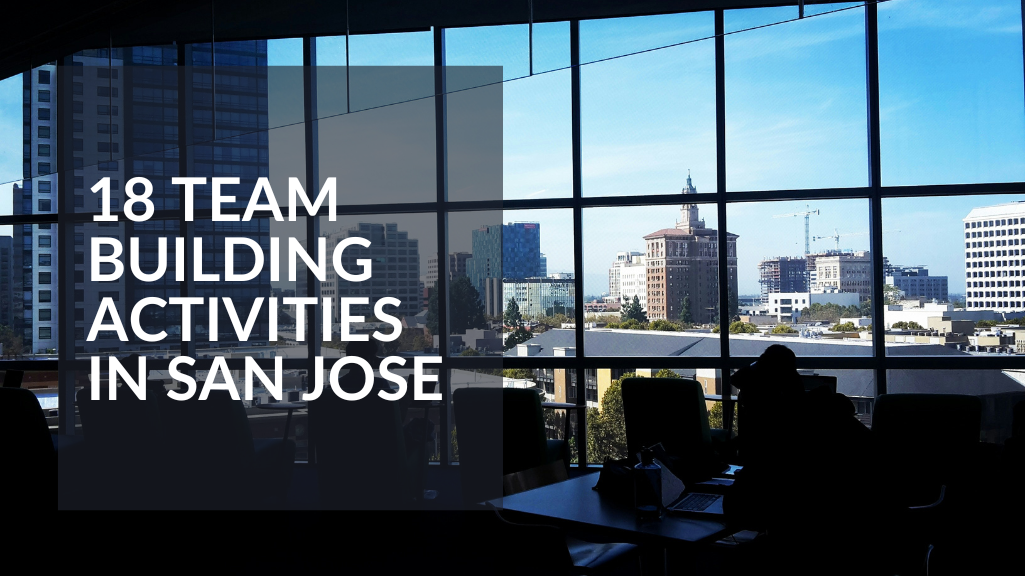The Role of Corporate Training in Employee Experience

“The only thing worse than training your employees and having them leave is not training them and having them stay.” — Henry Ford.
These are not baseless words uttered once by the founder of Ford Motor Company.
Ford is indeed one of the organizations promoting continuous employee training and skills development to expand workers’ knowledge and experience.
And Ford is not the only one. This article includes examples of other companies, too. In fact, 70% of employers offer at least some workplace training.
What about your company?
Corporate training can become your major force in driving great employee experiences. See why, then explore the best strategies for employee learning and development (L&D) shared by company leaders and managers.
- The Importance of Corporate Training in Enhancing Employee Experience
- Supercharge Team Communication and Collaboration
- Level Up New Hire Experiences and Manager Satisfaction
- Pump Up Engagement
- Increase Employee Loyalty
- How to Improve Employee Experience with Corporate Learning
- Implementing Strategy-Based Training
- Designing Engaging Training Programs
- Leveraging Technology for Corporate Education
- Cultivating Cross-Cultural and Cross-Generational Learning
- Measuring Training Effectiveness
- Conclusion
The Importance of Corporate Training in Enhancing Employee Experience

Corporate learning is like a superpower you can use to achieve tremendously beneficial results.
Supercharge Team Communication and Collaboration
“Through corporate group training, employees gain particular skills needed for teamwork and internal communications,” claims Ryan Hammill, Co-Founder and Executive Director of the Ancient Language Institute. “They exchange verbal and non-verbal cues (body language, tone of voice, gestures), share experiences, and foster respect and trust.”
Moreover, clear communication boosts team productivity by 25%. At the same time, 91% of employees say poor communication results in project mistakes or even failed projects (38% say so). Approximately 80% of companies intend to use collaborative tools and strategies that extend beyond traditional workplace boundaries.
Level Up New Hire Experiences and Manager Satisfaction
A corporate onboarding training program can help you integrate new hires into the team, make them familiar with the company culture, and improve their productivity. Not to mention that manager satisfaction increases by 20% with formal onboarding training.
The role of workplace training may be tangible through active virtual engagement of new workers, particularly when it comes to remote onboarding.
Pump Up Engagement
Great corporate training initiatives involve and engage every team member without leaving anyone behind.
92% of workers believe well-organized workplace training positively impacts their engagement. In fact, companies can see 15% higher employee engagement when investing in their professional development. 77% of businesses report a deficit in leadership, underscoring the necessity for enhancement.
Increase Employee Loyalty
LinkedIn found that 94% of employees would work for companies longer if the latter promoted their career development.So, by providing L&D opportunities, you earn the trust that lasts and increase employee retention. The more you train your workforce and develop their skills, the more loyal they become, maintaining a long-lasting bond.
How to Improve Employee Experience with Corporate Learning

Implementing Strategy-Based Training
A corporate training strategy is a comprehensive plan with objectives, methods, and activities to enhance employees’ knowledge and develop the required competencies.
You should work out a strategic approach to workplace learning that fits your L&D goals and needs. Incorporate these points into your plan:
- Employee journey stage: the onboarding phase, the growth and development phase, the pre-retirement phase
- Duration: hours, days, weeks, or months
- Regularity: weekly, bi-weekly, or monthly
- Scope: individual or group training
- Mode: virtual or in-person
- Mentorship styles: collaborative, peer-to-peer, executive mentoring, etc.
- Activities: workshops, seminars, debates, role-playing exercises, simulations, etc.
- Topics: customer service, cybersecurity, time management, and others.
Let’s look at one of the employee training strategies implemented by Anthony Martin, Founder and CEO of Choice Mutual, at the onboarding stage. He shares, “We provide onboarding training to ensure a smooth new employee experience and an easy transition to work. The educational process lasts four weeks and comprises different training styles, from classroom learning to one-on-one mentorship under the guidance of more skilled and proficient insurance agents.”

However, there are times when you must be ready to adapt your workplace training strategy or even pivot it on the go due to unforeseen circumstances. That’s what AmeriCorps did in 2020 amid the pandemic crisis. The AmeriCorps team quickly transitioned from an in-person mode to a virtual training series with Outback.
Designing Engaging Training Programs
Long gone are the days when corporate training confined workers to boring lecture rooms where they dozed over not less boring materials.
Today, the “fun factor” is fundamental for encouraging a positive workplace learning experience. Nine in ten employees want more engaging training sessions.
You can easily make your employee training program more captivating by adding the three elements: microlearning, personalization, and gamification.
Let’s dwell on each separately.
Microlearning
Rather than pouring tons of information at once on your trainees, prepare it in a bite-sized format and “feed” your employees with “snackable” content.
Try microlearning activities as follows:
- Quizzes
- Short masterclasses
- Micro-videos (three-to-five minutes)
- Audio clips
- Flashcards
- Checklists, etc.
Personalization
Here, your task is to personalize training materials and tailor them to different learner styles:
- Auditory (audio information)
- Visual (visuals)
- Analytical (numbers and logical tasks)
- Writer (note-taking)
- Reader (textbooks, handouts)
- Kinesthetic (movement-based and multi-sensory exercises)
For example, experiential learning may be ideal for those employees who are kinesthetic learners.
Learning through play
“Gamification totally reshapes modern corporate L&D programs, enhancing them with interactivity. Besides, game elements like levels, bonuses, or leaderboards promote a competitive work culture, motivate, and engage employees,” explains Jesse Hanson, Content Manager at Online Solitaire & World of Card Games.
How about trying trivia games on specific topics with points for correct answers?
Game on!
Leveraging Technology for Corporate Education
Digitalization has brought a whole new spectrum of tools for workplace training. Pick anything you wish:
- Virtual classrooms → BigBlueButton, Zoom, Adobe Connect
- Video learning tools → Echo360, Livestorm, Kaltura
- Learning management systems (LMS) → Learnetic, TalentLMS, The Learning Lab, Schoox, Axonify
- Social media platforms → Facebook or LinkedIn groups
- Mobile learning apps → EduBrite, Yarno, Skill Pill, EdApp
Here’s a quick fact about mobile training. Employees engaged in mobile courses are typically 43% more productive and 70% more motivated to complete them.
Volodymyr Shchegel, Vice President of Engineering at MacKeeper, stresses the importance of innovations and cutting-edge technologies in corporate learning. He says, “Artificial intelligence (AI), augmented reality (AR), virtual reality (VR), and the Metaverse form a quartet of must-use tech stack in workplace education. Why? Because they fully immerse employees into training sessions and simulate real-life scenarios for practicing specific skills.”
Look at the examples:
Case study #1. Walmart revolutionized its corporate training with AR and VR technology. The results? AR/VR training boosted employee confidence and knowledge retention and improved test scores by 10–15%.

Case study #2. Bank of America combined the Metaverse with AI and VR to train new hires via simulations. Through VR headsets, two thousand new workers gained hands-on experience in simulated situations (from customer interactions to back robberies).
Case study #3. Johnson & Johnson used VR to power surgical training. The results? Employees from the VR-trained group scored 233% higher than those in the non-VR group.
Cultivating Cross-Cultural and Cross-Generational Learning
Did you know?
The generational and cultural gaps between employees are wider than ever. According to Gallup, most young workers (Gen Z and younger Millennials) don’t feel a close connection to their older teammates, managers, or employers. Then, research proves it is harder to handle communications and interactions in multinational teams.
With this in mind, you can see the strong necessity of developing your employees’ soft skills, such as emotional intelligence, empathy, or conflict resolution, and making it easier for them to communicate with colleagues from various cultures and of different ages.
Alternatively, you can discover the peculiarities of diverse people and cultures through diversity, equity, and inclusion training (DEI training).
Learning corporate social responsibility is yet another way to socialize better. For that, consider charity team-building events or volunteer work.
“Volunteering is, by far, the best path to understanding various cultural groups and generations and becoming socially responsible,” believes Stephan Baldwin, Founder of Assisted Living. He provides an example: “For instance, your employees may gain cross-generational learning experience when volunteering in retirement communities or senior centers. You could organize outings, meaningful indoor activities, or simply communicate and spend quality time with senior residents.”
Surecomp’s experience is a superb example. The team volunteered at the Senior Citizen Association in Raanana, playing bingo with senior citizens and having quality conversations with them.

If you haven’t tried it yet, consider developing an employee volunteer training program to thoroughly prepare your workers for volunteering.
Measuring Training Effectiveness
Measuring your employee training strategy is the only way to know its effectiveness. This will help you understand the drawbacks, create more impactful workplace learning initiatives for the future, and, more importantly, see how to reduce training costs without sacrificing quality.
You can do that successfully by evaluating trainees’ skills and return on investment (ROI) of your corporate training program.
Regarding skill and performance evaluation, the following methods prove helpful:
- Real-time assessment amid training sessions
- Post-training quiz
- One-on-one or group discussion
- Employee survey
- Poll
- Knowledge check, etc.
“The more measurable results you have, the easier it is to figure out your training ROI, a financial metric calculating gains and benefits compared to the costs spent on training,” notes Jim Pendergast, Senior Vice President at altLINE Sobanco. “At this rate, it would be best to leverage ROI models (like the Phillips Model or the Kirkpatrick Model). These methodologies will help you tie the expenses on training programs to their outcomes,” he advises.
You can also set a quantitative goal and then measure it. For example, the Royal Canadian Mint leadership team wanted to learn how to manage a large organizational change and draw a clear roadmap with strategies.
After three leadership training sessions with Outback, the result was an action list with over 60 items ready for implementation.

Conclusion
From guiding your newcomers to educating your “long-rooted” employees, these time-tested corporate training strategies can help you increase job satisfaction, boost engagement, and retain the top talent. Demonstrate your commitment to the professional and personal development of your staff. Don’t wait any longer — develop your team and yourself now.
Invest in employee learning and development programs today for a brighter, more prosperous tomorrow.
Author Bio
Roman Shvydun – Freelance Writer
Roman writes informative articles about marketing, business, productivity, workplace culture, etc. During 10+ years of content creation experience, his articles have helped numerous entrepreneurs to scale up their businesses.




This website is an absolute gem! The content is incredibly well-researched, engaging, and valuable. I particularly enjoyed the [specific section] which provided unique insights I haven’t found elsewhere. Keep up the amazing work!
Corporate training in employee experience is vital for organizational success! For expert assistance in designing and delivering impactful training programs, consider Corporate Event Organisers. With our tailored approach, we’ll help you enhance employee satisfaction and drive performance!